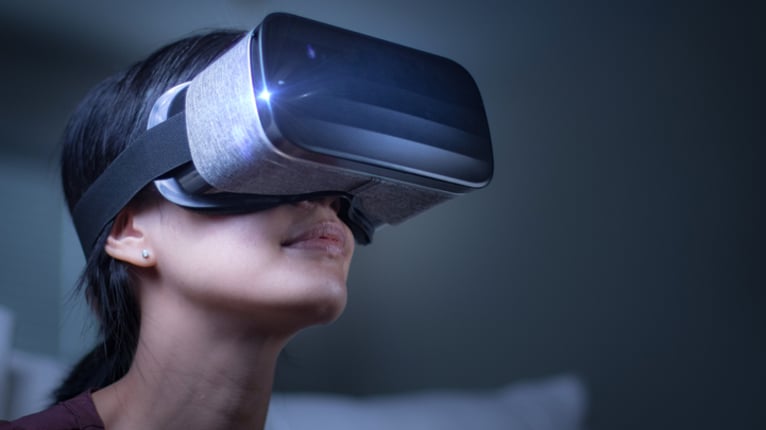Growing up with sports, I have been fortunate enough to not have to deal with the technology side of medicine other than antibiotics and a mandatory heart scan for the athletic department. However, I have always been super aware of all the advancements and available machines for those with injuries.
 |
| Injured Patient Using Virtual Reality to Learn to Walk Again |
I really enjoyed Diane Gromala's TEDx Talk about how instead of pitying herself for her chronic disease she used it as leverage for her research in interactive art and computer science. She discussed how virtual reality inspired her new paradigm having learned that it enables awareness and inner feelings. It is amazing to think that virtual reality cannot only relieve short term pain, but Diane's research proves that it can settle long term pain too.
 |
| Virtual Reality Goggles |
/illo_normal-cells-cancer-cells-596cdd256f53ba00111a65bb.png) |
| Normal vs. Cancerous Cells |
The "Architecture of Life" article focused on how molecules and atoms self assembles in the way they do. More specifically, how we can understand these natural rules of assembly and apply it to drug design, to tissue engineering—of the rapidly accumulating data we have about molecules, cells and other biological components". Brainstorming off of this idea, I wonder if machine technology in the future could identify the accumulation of tissue, molecules, and atoms before they form a cancerous tumor or a medicine that can be injected into the human body (like a vaccine at birth) that will forever monitor cell formation and prevent cancerous formations.
Works Cited:
- Casini, Silvia. “Magnetic Resonance Imaging (MRI) as Mirror and Portrait: MRI Configurations between Science and the Arts.” Configurations, Johns Hopkins University Press, 12 Jan. 2012, muse.jhu.edu/article/462877.
- Talks, TEDx. “TEDxAmericanRiviera - Diane Gromala - Curative Powers of Wet, Raw Beauty.” YouTube, YouTube, 7 Dec. 2011, www.youtube.com/watch?v=cRdarMz--Pw.
- “The Hippocratic Oath Today.” PBS, Public Broadcasting Service, www.pbs.org/wgbh/nova/article/hippocratic-oath-today/.
- Vesna, Victoria. “Medicine pt2” Cole UC online. Youtube, 21 April 2012. Web. 22 April 2019. https://www.youtube.com/watch?v=psjnQarHOqQ
- Vesna, Victoria. “Medicine pt1” Cole UC online. Youtube, 21 April 2012. Web. 22 April 2019. https://www.youtube.com/watch?time_continue=422&v=Ep0M2bOM9Tk
Faith, I love that you bring up the influence of medical technology on sports. Sometimes it feels like injuries are inevitable, even if it is not a contact sport. I am most fascinated by the technology that has allowed for imaging of the body. These tools make it easier to diagnose and treat the body more efficiently. Instead of trial and error, athletes (and anyone else) can get CAT scan, x-rays, MRIs, etc. and know their diagnoses and prognoses as soon as the scans have developed.
ReplyDeleteFaith, I like your connection of sports to medicine and technology. It is hard to play sports for so long and try to avoid injuries, but you cannot avoid them forever. The new technology being created makes it easier for people to recover faster and get back to the level they were at before.
ReplyDelete